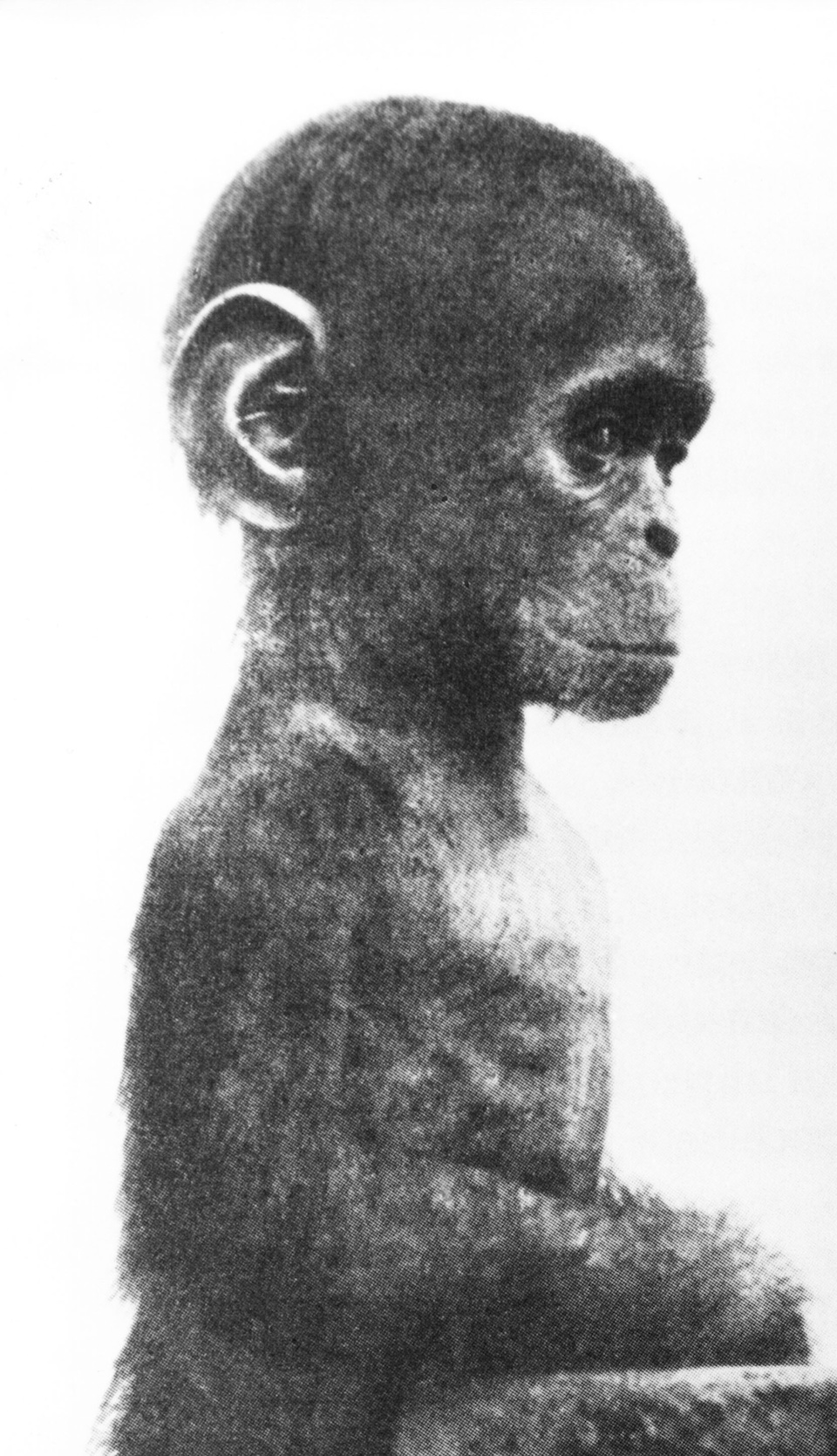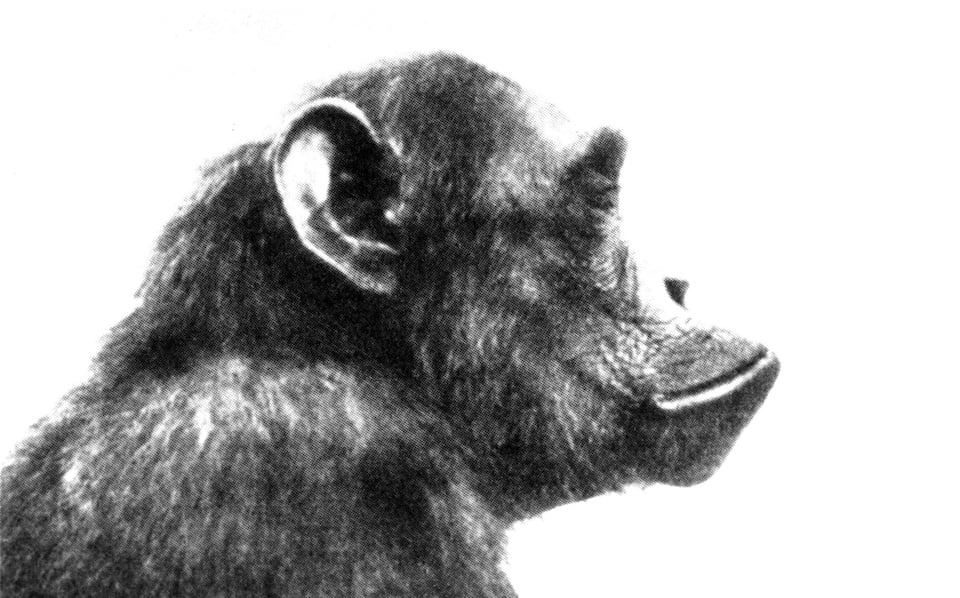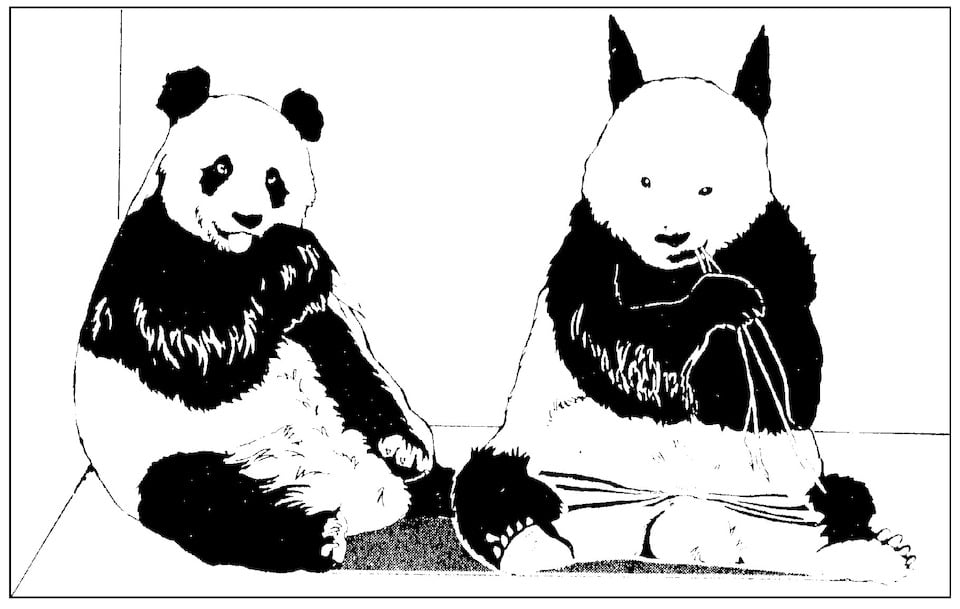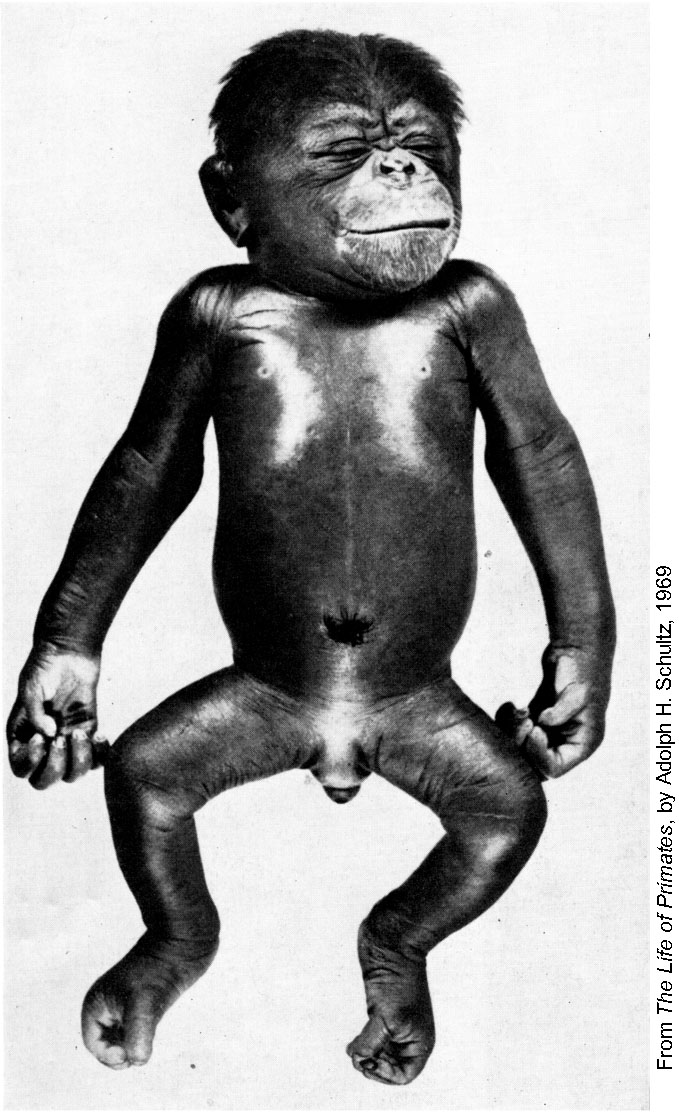Beyond The Human Condition
Page 83 of
Print Edition 7. How We Acquired Our Conscience
TO reiterate an important point, genetic refinement is an integrative process, not a divisive one as science has had to evasively maintain. Having grown up in an evasive, mechanistic world we are not used to thinking unevasively, but when we do we will see that as an integrative tool, genetic refinement has certain limitations: for example it normally cannot develop unconditional selflessness among large animals. If an animal were to be born with a genetic inclination to give its life to protect the others in its group for example, that trait would eliminate itself when the animal gave its life (since naturally the animal would lose the opportunity to reproduce). Unconditionally selfless traits are self-eliminating, and don’t tend to carry on in the species.
Not being able to develop unconditional selflessness or love inhibits the integrative process, because love is the essence of integration. The essential ingredient of integration or order is that the individuals or parts consider the welfare of the group or whole above their own welfare.
Unconditional selflessness is what makes the human body work so well. Every cell in our body has submerged its individuality to the needs and functioning of the largerPage 84 of
Print Edition system, which is our body. Put simply, selfishness is divisive while selflessness is integrative. Selflessness or love is the theme of integration or Development. It is the ideal state.
The problem for the development of order of matter (or ‘God’ if we like to personify Development), was how to generate unconditional selflessness among large animals, given this genetic barrier against it. The solution was ‘love-indoctrination’, a remarkable process that produced the first fully integrated species society or group of large animals. The genus in which this occurred was our immediate predecessor, Childman Australopithecus. In producing this integration in our forebears, love-indoctrination gave us our conscience and, fortuitously, liberated conscious thought in us.
To explain the process of love-indoctrination: while unconditional selflessness or altruistic behaviour normally cannot be developed genetically in large animals, some of their behaviour appears to be altruistic. For example a female appears to be behaving altruistically when, as sometimes happens, she loses her life protecting her young. In fact the ‘sacrifice’ is not selfless but selfish. Since the offspring carries her genes, the mother’s protective maternalistic genes are ensuring their own perpetuation when she protects the offspring. Genetic traits have to be selfish if they are to carry on in the species. (As stated, this is simply one of genetic refinement’s integrative limitations — it does not indicate that the meaning of existence is to be selfish as the evasive theory of sociobiology teaches.)
Importantly, while maternalism is genetically selfish behaviour, in appearance it is selfless behaviour. A mother gives her offspring nourishment, protection and shelter for apparently nothing in return. It was the appearance of selfless behaviour that gave Development the opportunity to generate unconditional selflessness.
A brain is an observer of its world. To the brain of an infant its mother’s maternalism appears to be selfless behaviour. This means that while an infant is being nurturedPage 85 of
Print Edition its brain is being taught that the way to treat others is selflessly or lovingly. Further, the longer the infancy the more thorough that training will be. If selflessness is taught sufficiently well in infancy, the adult will behave selflessly.
The ‘trick’ to love-indoctrination is that while maternalism is genetically selfish it trains the infant brain in selflessness. The longer the infancy and the more thorough the training, the more the species will practise selflessness or love or cooperation as adults, and the more integrative groups of that species will appear. After a while the process of ‘genes following the brain’ will (as will be explained) reinforce this process and make love an instinctive expectation.
To produce unconditional selflessness and with it integration, all Development needed was a species in which infancy could be prolonged. In most species infancy has to be kept as brief as possible because of the infant’s extreme vulnerability to predators. Zebras for example have to be capable of independent flight almost as soon as they are born, which gives little opportunity for them to be trained in selflessness.
Development had to ‘find’ a species that was capable of looking after the helpless infant. The successful candidates were the primates. Already semi-upright from having lived in trees where they swung from branch to branch, their arms were partially freed from walking and thus available to hold a helpless infant — the critical factor in developing unconditionally selfless behaviour. (Marsupials can support extended infancy but the pouch is like an external womb, allowing little behavioural interaction between mother and infant. It’s the ‘selfless’ treatment that trains the infant in selflessness or love. Also marsupials have to spend most of their time grazing. There is relatively little time for social interaction between mother and infant and thus training in love.)
With the facility in primates to care for the infant, all that remained was to select for a longer infancy and more maternal mothers and integration would develop. Maternalism became much more than mothers protecting their young, itPage 86 of
Print Edition became a case of mothers actively loving them. Significantly, we talk of ‘motherly love’, not ‘motherly protection’.
Of course, ideal nursery conditions were also required — ample food, comfortable conditions and security from external threats — to allow the loving of infants to take place. Infants are extremely helpless and vulnerable, as anyone who has held a baby in their arms will be aware, which means it is difficult enough just to look after them. However, it wasn’t sufficient just to look after them, they had to be loved. While extending infancy was ‘all’ that was needed to develop love-indoctrination it was an extremely ‘difficult’ development even for primates. The nursery conditions had to be absolutely ideal. As well, we have to remember that delaying maturity, as love-indoctrination does, postpones the addition of the new generations that are so vital for the maintenance of species which are limited mostly to single-offspring births. New generations ensure variety. We can see that developing love-indoctrination was not easy which, incidentally, is why many primate species remain stranded in infancy, unable to progress to childhood. Only one part of our ape ancestors’ probable range appears to have provided sufficiently luxurious conditions for love-indoctrination to develop — the aptly described ‘Cradle of Mankind’ — the Rift Valley of Africa.
Once individuals appeared that were trained in selflessness, the genes would follow the training in love, ‘reinforcing’ it. While at times an expression of selflessness could still mean elimination of the individual involved, selfless behaviour was now appearing in the species in spite of such losses. Similarly, when the conscious mind emerged later and went its own way, the genes followed, reinforcing what was happening. Generations whose genetic make-up in some way or other helped them cope were selected naturally, making our exhaustion somewhat instinctive in us today. We have been ‘bred’ to survive the pressures of the human condition. The genes would always naturally follow and reinforce any devel-Page 87 of
Print Edition opment process, in this they were not selective. The difficulty was in getting development to occur, not in making it instinctive because that was automatic. If it were not for the ability of genetically selfish maternalism to train infants in selflessness, selflessness would not have occurred to be reinforced genetically because selflessness is a self-eliminating trait.
Importantly, the training in selflessness or love was only an orientation, not an understanding. The infant was being ‘brain-washed’ with love. It was being love-indoctrinated. This perfect instinctive orientation to integration, now much repressed by our upset, is what we refer to as our conscience. Our conscience is that part of our instinctive self or soul that is concerned with how we behave — it’s our moral sense.
Science, being evasive of integrative meaning, couldn’t acknowledge the integrative ‘love-indoctrination’ process and actively evaded it, claiming maternalism was nothing more than mothers protecting their helpless infants. We have had to live with the unbearable fact that during the 2 million years of humanity’s upset adolescence (preoccupied with the battle against ignorance) we have been unable to love our infants as much as we did during humanity’s infancy and childhood. We made it bearable by evading all significance of nurturing in our species’ history and in our personal upbringing. With our upset now defended, and our inability to nurture understood, the truth of the significance of nurturing in our lives and in our species’ history can be admitted safely at last. We no longer have to blame our upset evasively on genes (or ‘nature’ as the contrived genetic excuse was called in the ‘nature versus nurture’ debate) or on ‘chemical causes’ as has been fashionable.
Counsellor: He’s a very bright, very aware, extremely tense little boy who is only likely to get tenser in adolescence. He needs some special attention.
Karen: It’s because he was first.
Counsellor: Hm?
Page 88 of
Print Edition Karen: It’s because he was our first. I think we were very tense when Kevin was little. I mean, if he got a scratch, we were hysterical. By the third kid, you know, you let him juggle knives.
Counsellor: On the other hand, Kevin may have been like this in the womb. Recent studies indicate that these things are all chemical.
Gil: (points at Karen) She smoked grass.
Karen: Gil! I never smoked when I was pregnant. . . . Will you give me a break?
Gil: But maybe it affected your chromosomes.
Counsellor intervening: You should not look on the fact that Kevin will be going to a special school as any kind of failure on your part.
Gil: Right, I’ll blame the dog.
Scene from the 1989 movie Parenthood.
Interestingly, as genetic refinement began to support love-indoctrination, our intellect began to support it also. We self-selected integrative traits by consciously seeking out love-indoctrinated mates, members of the group who had had a long infancy and were closer to their memory of infancy (that is, younger). The older we became the more our infancy training in love wore off; we began to recognise that the younger an individual, the more integrative he or she was likely to be. We began to idolise, foster and select youthfulness because of its association with cooperativeness or integrativeness. The effect, over many thousands of generations, was to retard our physical development so that we became infant-like adults. This explains how we came to regard neotenous (infant-like) features — large eyes, dome forehead and snub nose — as beautiful.
The revealing pictures of an infant and adult chimpanzee (from Stephen Jay Gould’s book The Mismeasure of Man, 1981) show the greater resemblance humans have to the baby, illustrating the influence of neoteny on human development.Page 89 of
Print Edition

Infant common chimpanzee

Adult common chimpanzee
Page 90 of
Print Edition So strong is our attraction to ‘cute’/neotenous features, animals that exhibit them, such as seal pups, giant pandas and tree frogs, become favourites.

Would we care if they weren’t so cute?
White out the black eye spots and give the ears
points, and the panda loses much of its appeal.
The process of love-indoctrination tells us why and when we lost our body hair.
The interesting fact [is] that man has retained hair chiefly on the scalp, eyebrows, borders of the eyelids, lips and chin, or precisely on those places where hair first appears in all primate foetuses . . .
Adolph H. Schultz, The Life of Primates, 1969.
Page 91 of
Print Edition

Chimpanzee foetus at seven months showing body hair on the scalp, eyebrows, borders of the eyelids, lips and chin.
The physical effect of neoteny was that we lost most of our body hair and became infant-looking compared with our adult ape ancestors. We selected for what we now recognise as innocence. (Later, during humanity’s upset adolescence, we would become resentful of innocence and instead of Page 92 of
Print Edition cultivating it would seek to destroy it. The attraction of innocence to mate with became perverted. This perversion of the act of procreation is what we now refer to as ‘sex’, which is explained on page 138.)
Since males were preoccupied competing for mating opportunities before love-indoctrination, females were first to self-select for integrativeness by favouring integrative rather than competitive and aggressive mates. This helped love-indoctrination subdue the males’ divisive competitiveness. Without being aware of love-indoctrination, primatologists have noted self-selection of integrativeness by females.
Male [baboon] newcomers also were generally the most dominant while long-term residents were the most subordinate, the most easily cowed. Yet in winning the receptive females and special foods, the subordinate, unaggressive veterans got more than their fair share, the newcomers next to nothing.
Socially inept and often aggressive, newcomers made a poor job of initiating friendships.
Shirley Strum, National Geographic, November, 1987.
The high frequencies of intersexual association, grooming, and food sharing together with the low level of male-female aggression in pygmy chimpanzees may be a factor in male reproductive strategies. Tutin (1980) has demonstrated that a high degree of reproductive success for male common chimpanzees was correlated with male-female affiliative behaviours. These included males spending more time with estrous females, grooming them, and sharing food with them.
The Pygmy Chimpanzee, Edited by Randall L. Susman, 1984, from Chapter 13: Social Organization of Pan paniscus in the Lomako Forest, Zaire, by Alison Badrian and Noel Badrian.
Note that this self-selection for integrativeness accounts for humanity’s rapid development.
Page 93 of
Print Edition We have to explain the speed of human evolution over a matter of one, three, let us say five million years at most. That is terribly fast. Natural selection simply does not act as fast as that on animal species. We, the hominids, must have supplied a form of selection of our own; and the obvious choice is sexual selection.
Jacob Bronowski, The Ascent of Man, 1973.
The process of love-indoctrination shows that maternalism made us human. Throughout humanity’s infancy and childhood, which lasted from 12 to 2 million years ago, nurturing was the most important role in the group. Men had to support it by protecting the group from external threats such as marauding leopards. Women had to devote all their attention to loving their infants if integratively trained and thus cooperative adults were to develop. Until it became instinctive, love-indoctrinated cooperation was extremely hard to develop and maintain.
While humanity was matriarchal (female-role dominated) during its infancy and childhood, it became patriarchal when the threat of ignorance emerged during its adolescence. This patriarchal adolescent stage is explained on page 138.
So love-indoctrination’s earliest achievement was the creation of total integrativeness in large animals, namely Childman Australopithecus. While we became upset and divisive during our adolescence, we lived utterly integrated lives during our childhood, which lasted from 5 million years ago to 2 million years ago. We were once in the image of God (Genesis 1:27) and in Christ’s words there was a time when God loved [us] before the creation of the [upset] world (John 17:24) and the glory . . . before the [upset] world began (John 17:5). God made mankind upright [uncorrupted], but men have gone in search of many schemes [understandings]. (Eccl. 7:29). Being trained in love as youngsters we practised it as adults and cooperated with each other. We considered the group above ourselves.
Page 94 of
Print Edition . . . the basis of all primate social groups is the bond between mother and infant. That bond constitutes the social unit out of which all higher orders of society are constructed.
Richard Leakey and Roger Lewin, Origins, 1977.
But, far more deeply, [the brain] depends on the long preparation of human childhood . . . The real vision of the human being is the child wonder, the Virgin and Child, the Holy Family.
Jacob Bronowski, The Ascent of Man, 1973.
I would mention at this point that, since the understandings being presented represent a reconciliation of science and theology or mechanism and holism, it is to be expected that many of the illustrations for unevasive holistic truths will come from religious teaching. When the metaphysical language of religious teaching is interpreted biologically as it now can be, the soundness or truthfulness of the teaching becomes clear. Truth is where you find it and there is nowhere better to go for the unevasive truth than the great religions. Their teachings are the words of some of the least alienated men in recorded history. (The word ‘holy’ used to describe true prophets literally means whole or entire; it has the same origins as the Saxon word ‘whole’, so it confirms the prophets’ wholeness or soundness or lack of alienation.) What is more, the teachings of these exceptionally innocent men were recorded before we became highly sophisticated in the art of evading the truth. The fact is, all the great religions are ‘gold mines’ of unevasive truth. The support people have given them in their millions upon millions over many centuries is evidence of the soundness of their teaching. Christ’s words By their fruit you will recognise them (The Bible, Matt. 7:16) in fact define the scientific method of verification, which depends on reproducible observations and measurements or ‘what works’. The predominance of quotes from Christianity reflects in part my greater familiarity with that religion.


